
Students review the steps of the scientific method, then apply the steps of the scientific method using an online interactive game.
- Subject:
- Science
- Material Type:
- Lesson Plan
- Provider:
- Alabama Learning Exchange
- Date Added:
- 02/15/2018

Students review the steps of the scientific method, then apply the steps of the scientific method using an online interactive game.

Students investigate population density and its effects on a population. They will create an experiment to observe, measure, and record plant growth, development, and density dependent competition.
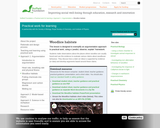
This lesson is designed to exemplify an argumentation approach to practical work, using a predict, observe, explain framework. Students make observations about the places where woodlice are usually found and use this evidence to evaluate various claims about woodlouse behaviour. They discuss how a claim (or idea) is supported by evidence (or data) and develop arguments based around these claims. The students’ focus during the practical work should be on using the evidence collected to evaluate these claims, rather than on the practical methodology.

In this lesson, students will use a simulation activity to illustrate how predator-prey and competitive interactions affect population sizes. After collecting data throughout the simulation, students will create a graph and then analyze the graph to predict the populations for several more generations.

In this activity, students use an online interactive to exlpore what happens to one forest ecosystem when a resource pulse occurs.

This course was created by the Rethink Education Content Development Team. This course is aligned to the NC Standards for 8th Grade Science.

This course was created by the Rethink Education Content Development Team. This course is aligned to the NC Standards for 8th Grade Science.

This course was created by the Rethink Education Content Development Team. This course is aligned to the NC Standards for 8th Grade Science.
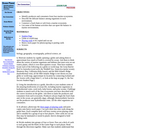
In this lesson, students identify producers and consumers from four marine ecosystems and describe the delicate balance among organisms in each environment. Students will construct a food chain or web from a marine ecosystem and list some of the human activities that can upset the balance in marine environments.
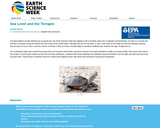
Students will create a model estuarine habitat and investigate how various factors will impact a terrapin population in the habitat.

In this archived webinar, conservation biologist Joe Kolowski leads us into the Peruvian Amazon, a rich, fertile, and essential part of our planet. He shows how the technique of ?camera trapping? helps scientists to understand the creatures that move about the jungle?particularly mammals that may be endangered by oil exploration. Kolowski is working with other scientists to develop a conservation initiative for the area. They are incorporating biodiversity principles and new scientific research in an attempt to minimize the negative effects of oil exploration and development in this area.

In this activity, students will collect and examine aquatic snails. They will identify the parts of a snail as well as determine the number of species present in the environment. Students will collect, mark, return to the water and recollect snails in order to collect data that will allow students to make an estimation of the snail population.

In this lesson, students are introduced to the concept of an invasive species, the Burmese python, and its impact on other animal populations in an ecosystem. Students will explore the impact that competition and predation have on native populations due to the introduction of an invasive species.

Students obtain, evaluate, and communicate information about flows and cycles of energy in cold-seep ecosystems. Students will develop a model that describes some of the interdependent relationships in cold-seep ecosystems. Students will also develop and use a model to explain states and changes between states of methane hydrates.
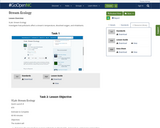
VLab: Stream EcologyInvestigate how pollutants affect a stream's temperature, dissolved oxygen, and inhabitants.

Students participate in an activity that demonstrates the principles and dynamics of food chains and how energy is transferred when it passes from one organism to another.

Students analyze data and maps to understand how increased population growth impacts the water quality of the Chesapeake Bay. Then they explore how the health of the Bay affects its animals.

Students identify cause-and-effect relationships between sugar cane production and the health of the Great Barrier Reef in Australia.

This brief video lesson describes the miraculous journey of infant sea turtles as these tiny animals run the gauntlet of predators and harsh conditions. Then, in numbers, see how human behavior has made their tough lives even more challenging. Discussion/assessment questions and suggested supplemental resources are also included.
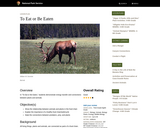
In this lesson, students demonstrate energy transfer and connections between plants and animals.